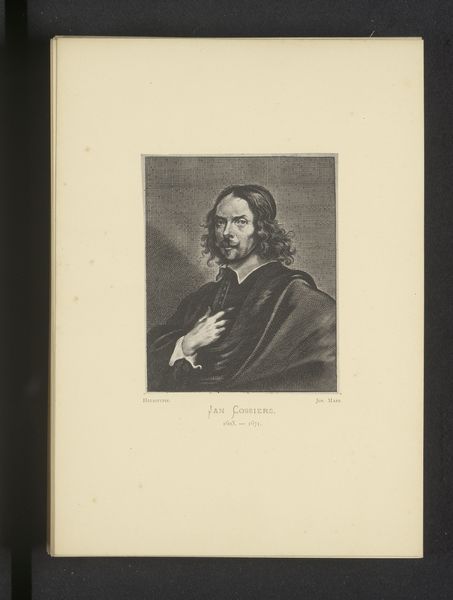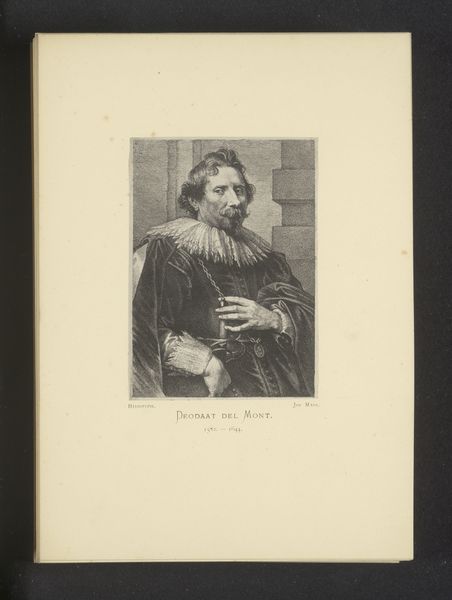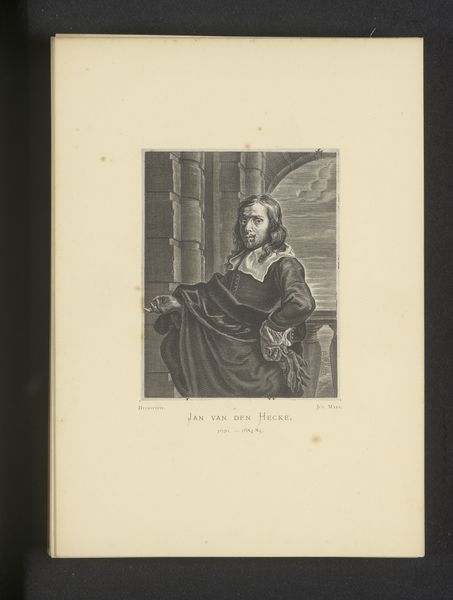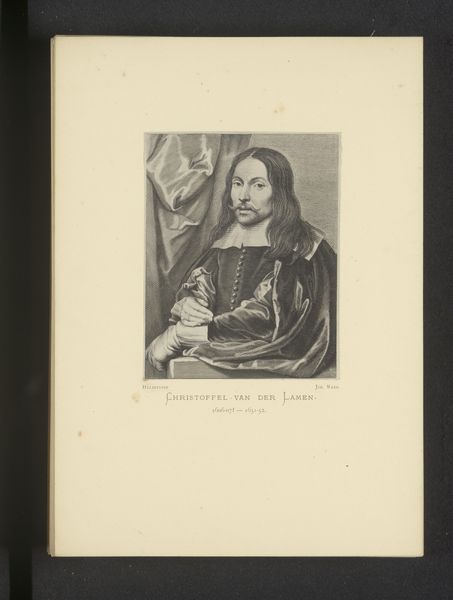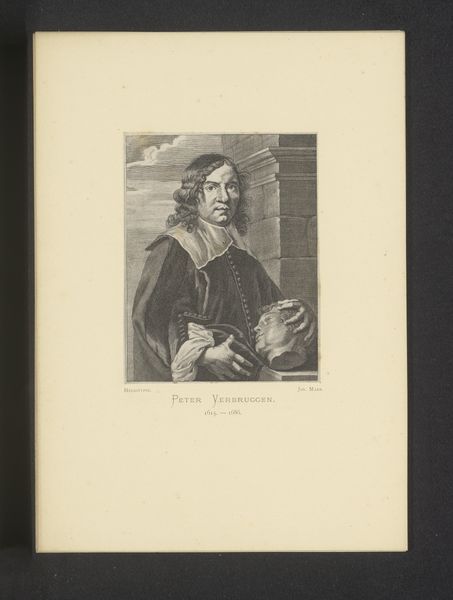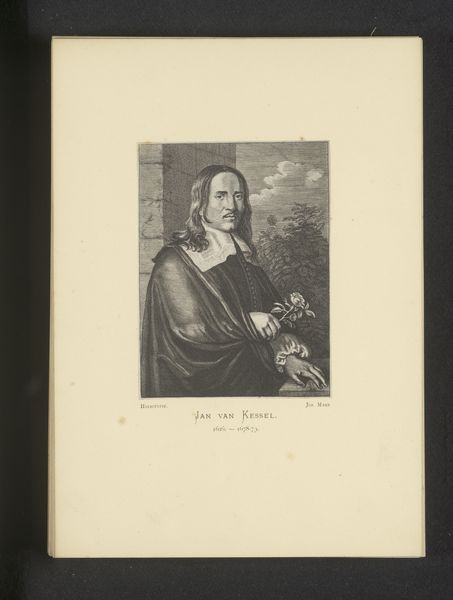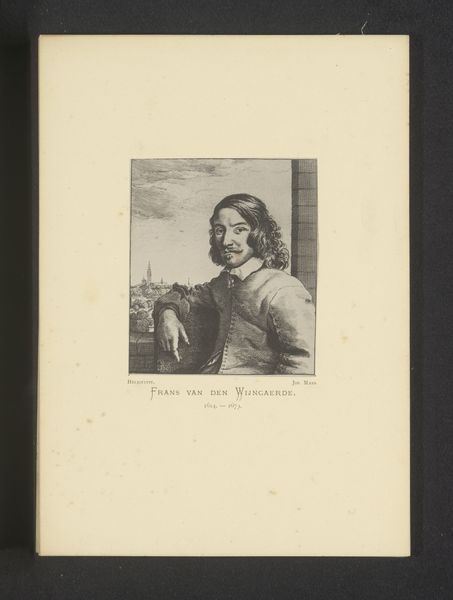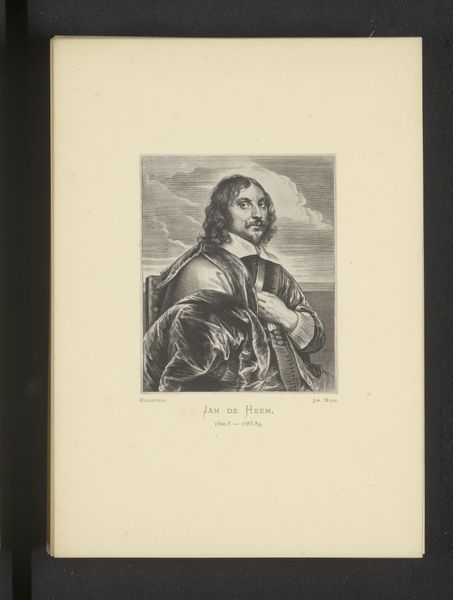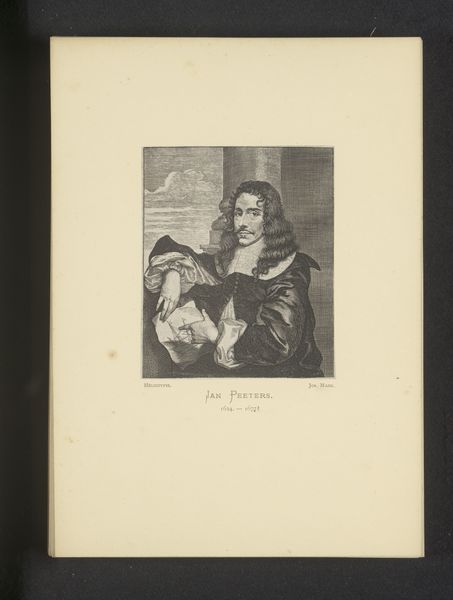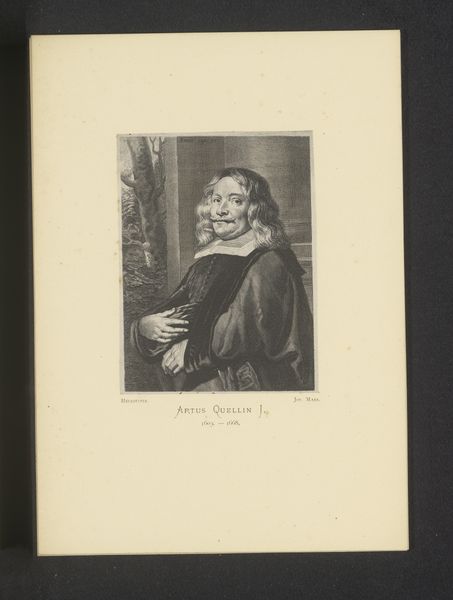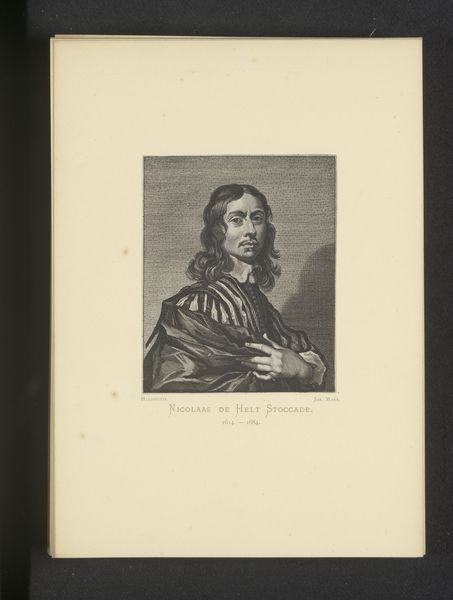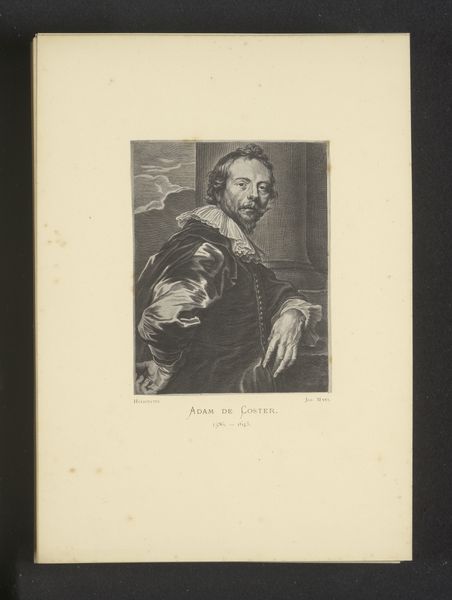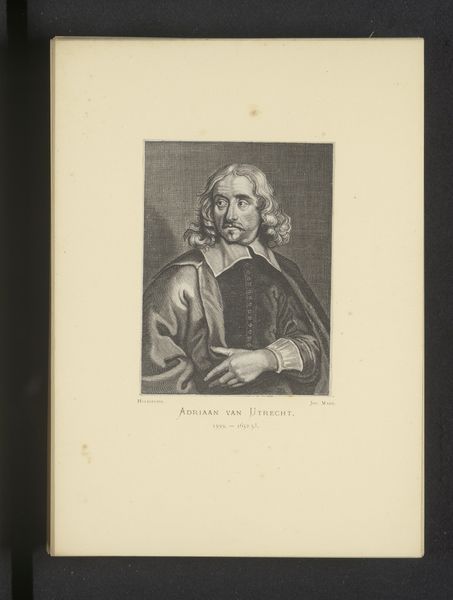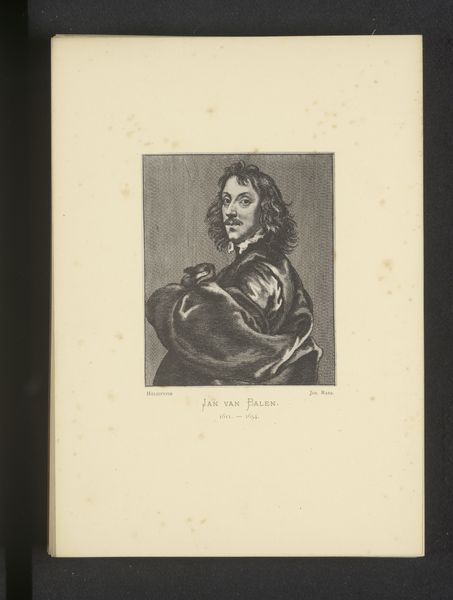
Reproductie van een gravure van een portret van Joris van Son door Conrad Lauwers before 1877
0:00
0:00
Dimensions: height 116 mm, width 90 mm
Copyright: Rijks Museum: Open Domain
This is a reproduction of a portrait of Joris van Son by Joseph Maes, likely created in the late 19th or early 20th century. It replicates an engraving by Conrad Lauwers. The image evokes the Dutch Golden Age, a time of immense artistic and economic prosperity. Van Son, a still life painter of that era, is presented with the markers of status: fine clothing, loose flowing hair, and an architectural backdrop. But why reproduce this image so long after the fact? We should consider the role of institutions in shaping artistic taste. Museums, art schools, and even the art market play a huge role in determining which artists and styles are valued. Perhaps this reproduction reflects a renewed interest in Dutch Golden Age painting, driven by a desire to emulate a period of national pride. Or perhaps it's a commentary on the very act of reproduction and how it affects our understanding of the past. To truly understand this piece, we must research the social and cultural context in which it was made. What was the state of art education at the time? What were the prevailing attitudes towards Dutch Golden Age painting? Only then can we begin to unravel the complex web of meanings embedded within this reproduction.
Comments
No comments
Be the first to comment and join the conversation on the ultimate creative platform.
